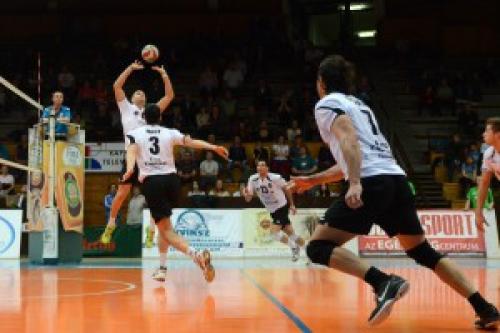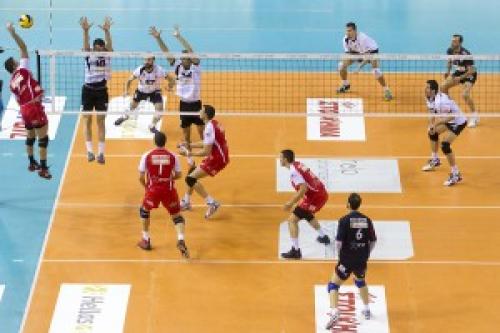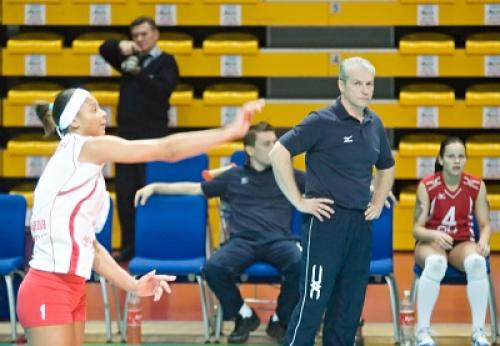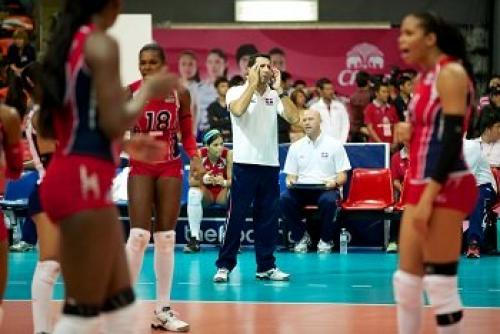Volleyball Positions and Their Roles. Volleyball Positions and Player Roles
- Volleyball Positions and Their Roles. Volleyball Positions and Player Roles
- Volleyball ws. Origins
- Volleyball Games. Alphabetic - Best Rated - Latest - Most Played Best Rated Volleyball Games
- Pitch server Volleyball. Термины в волейболе и их значение: общие слова, команды, сленг
- Volleyball vocabulary. Basic Volleyball Terminology for Newbies
- How to play Volleyball. Basic Volleyball Rules
- How Many Players are there In a Volleyball Team. How Many Players Per Team In Volleyball
- Volleyball Rules. Volleyball
- Middle blocker Volleyball responsibilities.
Volleyball Positions and Their Roles. Volleyball Positions and Player Roles

In the game of volleyball, there are six main areas of the court occupied by players that have specific roles. There are three players in the front row of the court, and three players in the back row. These players rotate in a clockwise manner each time they win the serve. Below are explanations of the different player positions and roles on the court.
Volleyball Positions

Setter
Setter : The setter is the person that distributes the ball to the team’s attackers. This person is a leader on the team, much like a quarterback on a football team, or a point guard on a basketball team. The setter has to think quickly and run plays for the offense. The setter ideally contacts every second ball when their team is receiving the serve.
Outside Hitters : There are two outside hitters on a team. Their main responsibility is to attack the ball and put it down inside the boundaries on the opponent’s side of the court. These hitters attack the ball from the left of the court. They receive the majority of the sets during the game. The outside hitters usually have solid back row skills which allow them to stay in the game for all rotations.

3 Player Block
Middle Hitter : This player has excellent blocking skills. The middle hitter moves along the net and blocks the attacks from the opponent. The middle hitter attacks balls that are set quickly because of the close position to the setter in the front row. The middle hitter communicates blocking strategies to the team.
Opposite Hitter : This person hits from the right side of the court, and they are also called right side hitters. Since they are positioned in front of the opposing team’s left side attackers, they must have strong blocking skills. The opposite hitter also helps the setter run the offense when the setter digs the first ball and someone else is needed to set the attackers. The opposite hitter is often one of the more versatile players on the team.

Outside Hitter
Libero : This player is a defensive specialist. The libero has strong passing and digging skills. This person plays in the back row, and they receive most of the serves from the opponent. The libero must have good ball control and communication because they start the offense for the setter and the hitters. The libero has quick reactions and they are ready to sprint, dive, and keep the ball in play for the team.
Volleyball players train hard to develop the skills needed to succeed in their designated positions. Sometimes players are capable of fulfilling multiple roles on a volleyball team. No matter how strong a player is at their certain position, the only way to win is if all players work well together. The goal of every volleyball team is to have players understand their roles on the court, and cooperate with each other to effectively execute their game plan against opponents.
Volleyball ws. Origins
In December 1895,in Holyoke, Massachusetts (United States), William G. Morgan , a YMCA physical education director, created a new game called Mintonette , a name derived from the game of badminton , Another indoor sport, basketball , was catching on in the area, having been invented just ten miles (sixteen kilometres) away in the city of Springfield, Massachusetts , only four years before. Mintonette was designed to be an indoor sport, less rough than basketball, for older members of the YMCA, while still requiring a bit of athletic effort.
The first rules, written down by William G. Morgan, called for a net 6 ft 6 in (1.98 m) high, a 25 ft × 50 ft (7.6 m × 15.2 m) court, and any number of players. A match was composed of nine innings with three serves for each team in each inning, and no limit to the number of ball contacts for each team before sending the ball to the opponents' court. In case of a serving error, a second try was allowed. Hitting the ball into the net was considered a foul (with loss of the point or a side-out)—except in the case of the first-try serve.
After an observer, Alfred Halstead, noticed the volleying nature of the game at its first exhibition match in 1896, played at the International YMCA Training School (now called Springfield College ), the game quickly became known as volleyball (it was originally spelled as two words: " volley ball " ). Volleyball rules were slightly modified by the International YMCA Training School and the game spread around the country to various YMCAs.
In the early 1900s Spalding , through its publishing company American Sports Publishing Company, produced books with complete instruction and rules for the sport.
Volleyball Games. Alphabetic - Best Rated - Latest - Most Played Best Rated Volleyball Games
Coconut Volley
Tropical beach volleyball with umbrellas and coconuts! Grab a beach umbrella and bounce the coconut around in single player or against a friend on the same device.
Head Sports Volleyball
Play against the computer AI or against a friend in this volleyball game from the Head Sports series. Set the AI skills in the menu if the game starts off too hard.
Mob Sport
A primitive form of volleyball. Hit the black animal and try to make it land on the opponent's side of the game field.
Crab-Ball
Crab beach volleyball! Use the arrow keys to control your crab and try to score on your opponent's side.
Absolutist Volleyball
A silly looking volleyball game. The pace is high, even when the difficulty is set to novice it's quite hard to win. You're the character on the right side of the net.
Sports Heads Volleyball
Play this unusual volleyball game where the players are just heads with a single hand. Win 10 matches to become the champion.
BunnyLimpics: Volleyball
Play the volleyball competition in this bunny Olympics game. Use the arrow keys to move the bunny, the game requires quick reflexes, good luck!
Bear Ball
Play a volleyball match in the forest, try to hit the ground on the opponent's side of the stick. Jump and move to block shots so the ball won't land on your side. 2 player mode…
Ragdoll Volleyball
An addictive ragdoll-physics based volleyball game. Win matches against five other ragdolls to become champion. Watch out for the pointy spike in the middle!
Rule the Beach Volleyball
A challenging 3D volleyball game, it's recommended to set the difficulty to beginner when you start out. Read the instructions inside the game before playing!
Zoo Volley
Play a game of volleyball against other animals. You can try to beat the penguin, panda, pig or hedgehog in this minigame. You can play until there are 25 points scored, so it m…
Just a Volley
Just a volley ball game with great physics.
Pitch server Volleyball. Термины в волейболе и их значение: общие слова, команды, сленг
Термин в волейболе — наименование понятия, относящегося к волейболу, в том числе и судействе.
Терминология в волейболе — специальный язык, совокупность специальных знаков, употребляемых в волейболе.
Сленг — жаргон в разговорной речи (спортивные соревнования, судейство).
Общие понятия
Определение волейбола
Перевод слова «Volleyball» — английское слово состоит из двух слов: Volley — удар слета, ударять мяч с лета или летающий, или парящий. Ball — мяч.
Термин «волейбол» означает командную спортивную игру с мячом. Соревнования проводятся на специальной площадке. Задача игроков направить мяч на сторону соперника таким образом, чтобы он приземлился на площадку противника или игрок защищающейся команды допустил ошибку.
Любительский волейбол — спорт, который характеризуется тем, что для занимающихся им не является основным занятием, профессией.
Массовый волейбол — спорт, направленный на повышение уровня физической подготовленности, сохранения здоровья и работоспособности, а также служащий средством активного отдыха.
Пляжный волейбол (бич-волей) — разновидность волейбола на песчаной площадке, 2×2 чел.
Профессиональный волейбол — спорт, характеризующийся тем, что для участвующих в нем волейболистов является основным занятием, профессией.
Школьный волейбол — часть спорта, направленная на физическое воспитание и физическую подготовку обучающихся в образовательных учреждениях начального общего, основного общего и среднего (полного) общего образования, их подготовку к участию и участие в физкультурных, спортивных мероприятиях.
Цель игры в волейбол — направить мяч над сеткой, чтобы он коснулся площадки соперника, и предотвратить такую же попытку соперника.
Федерации и официальные органы
ВФВ — Всероссийская федерация волейбола.
ЕКВ — Европейская конфедерация волейбола.
ФИВБ — Международная федерация волейбола.
Директорат всероссийских соревнований — орган ВФВ, утверждаемый Президиумом ВФВ. Несет ответственность за подготовку и проведение чемпионата России и Кубка России.
Мировой конгресс — высший орган Международной федерации волейбола.
Официальные лица — руководители и официальные представители ВФВ, руководители ассоциаций региональных федераций волейбола и региональных федераций волейбола, клубов, аккредитованные представители СМИ.
Президиум ВФВ — орган управления, являющийся высшей инстанцией в период между отчетно-выборными конференциями ВФВ.
Подавальщики мяча – это персонал, чьей работой является поддерживать ход игры перекатыванием мяча подающему игроку между розыгрышами.
Болбои — юные подавальщики мячей, своей работой они помогают спортсменам на игровой площадке и одновременно учатся у мастеров.
Виды игры
Игра двусторонняя — форма соревновательной подготовки в волейболе. Во время тренировочного процесса спортсмены для игры разделяются на две команды и выполняют задание наставника.
Игра на нейтральном поле (площадке) — соревнования между участниками матча проходят в городе, чужом для обоих соперников.
Игра на своем поле (площадке) — команда участвует в матче, который проходит на поле (площадке) города, где она располагается, тренируется и играет.
Игра товарищеская — встреча двух команд по волейболу подготовительного, тренировочного характера.
Матч – спортивное соревнование между двумя волейбольными командами.
Матч-реванш – повторный волейбольный матч, в котором одна из команд пытается вернуть себе титул, утерянный ей в предыдущем матче с тем же соперником.
Volleyball vocabulary. Basic Volleyball Terminology for Newbies
Here is volleyball terminology everyone should learn.
Volleyball Game (Set)
A volleyball game or set is played to a predetermined number of points. Games must be won by at least 2 points. For example, if a game is being played to 25 points, if a 24-24 tie occurs, the game isn’t over until a team leads by 2 points.
Volleyball Match
Matches are a made up of games. Match play usually consists of competing until one team wins 2 out of 3 or 3 out of 5 games.
Playing Fault
A fault is a violation of the rules. The result of a fault is a point. Examples of playing faults are: team hits the ball 4 times without returning it back over the net, a player contacts the ball 2 consecutive times, a player touches the net when blocking or attacking, a player catches and throws the ball.
Point
Volleyball Rally
A rally is the time between the serve and the end of the play. In some volleyball terminology a rally is synonymous with volley .
Volley
A volley is keeping the ball in play and returning it to your opponent without committing any playing faults.
Rally Scoring
Side Out
When the receiving team wins the rally it is called a side out. The receiving team then must rotate positions. Now they are the serving team.

How to play Volleyball. Basic Volleyball Rules
Not knowing the basic volleyball rules can be a frustrating experience whether you're a player, coach, or just a fan.
You may have stumbled upon volleyball on television. You're watching the game, the referees make a call, and you don't understand why.
Maybe you have a sudden interest in volleyball now that your daughter has made the high school volleyball team. You want to understand the rules the best you can so you can cheer her team on.
Maybe you're a player that often gets frustrated when a referee makes a call that you don't understand.
Maybe you're coaching and looking for every advantage you can get to help your team win.
Maybe you're a recreational volleyball player that is looking for that edge you need.
Whether you're a coach, athlete, parent, fan, or just a recreational player , it's a good idea to be familiar with the basic volleyball rules.

How Many Players are there In a Volleyball Team. How Many Players Per Team In Volleyball
Volleyball is a sport that has progressed a lot over the years.
If I were to answer this question a few years ago my article would be extremely short.
However, with many variations of Volleyball popping up left right and centre the answer has become a lot more blurred.
If your perception ofis strictly the traditional form of Volleyball being.
There are 6 players per team on the court at any one time in traditional indoor volleyball. However, you are allowed 12 players per roster noted on the team sheet.
This means throughout the game you can make substitutions.
If you are more familiar with the various disciplines of volleyball see the below table for each number of players per discipline
Now there are some strict terms in how these substitutions can be used which I will touch on later.
Now the reason I mentioned about what your perception of volleyball is, is because there are lots of different strains of volleyball now, all of which have different players per team.
There is Beach Volleyball, Snow Volleyball, Sitting Volleyball and more.
Well you know how many players are on each team, which means you are half way there.
Indoor Volleyball Team Size and Rules
Now it is worth noting that different leagues may have different rules relating to this, however, for the sake of this article I am talking about the general rules of most competitive leagues such as,etc.
So as stated above an indoor Volleyball team has 6 players per team on the court at any one given time.
The oncourt team is different to an active roster though.
You are able to put upto 12 players on the scoresheet before a game begins, as a volleyball match can consist of 5 sets it would be reasonable to assume that players need a break or your team may need a switch up to get out of a slump.
With this in mind, you are able to make upto 12 substitutions per set. One thing to note with these substitutions per set is that once a player has been subbed out for a specific player they can only be subbed back in for the player that previously replaced them.
Once you have made them two substitutions you can no longer sub that position.
As mentioned above you have 12 available substitutions per set, so if you don’t use all 12 in one set they will be lost, not carried over.
Beach Volleyball Team Size and Rules
Beach Volleyball has been one of the fastest growing variations of Volleyball over the last few years.
It is action packed, beautiful to watch and even better to play.
In Beach Volleyball you have 2 players on each team and no substitutions or reserves.
In Beach Volleyball it is you and your partner vs the world.
In the last few years it has snuck it’s way into the olympics and been one of the most watched sports everytime it has been included.
Beach volleyball is here to stay and in fact it may even be adding a new variation into the mix.
4 man Beach Volleyball
In beach volleyball you have an awful lot of court to cover and when an extremely good team plays a lesser team, the game can become very dull and one sided.
Although 4 vs 4 dates back as early as 1930 its traction and grew has been extremely recent. In fact there is now even ancreated and published to regulate the sport.
Recently the 2019 Beach Games were held in
Due to the popularity of the 4 man beach game, they opted to include it in the event.
It was extremely well received and enjoyed by all spectators that I honestly think it will be appearing in more and competitions and even has the chance to become an olympic sport in the not so distant future.
Volleyball Rules. Volleyball
Volleyball is a sport played by two teams on a playing court divided by a net. There are different versions available for specific circumstances in order to offer the versatility of the game to everyone. The object of the game is to send the ball over the net in order to ground it on the opponent's court, and to prevent the same effort by the opponent. The team has three hits for returning the ball (in addition to the block contact). The ball is put in play with a service, hit by the server over the net to the opponents. The rally continues until the ball is grounded on the playing court, goes "out" or a team fails to return it properly. In Volleyball, the team winning a rally scores a point (Rally Point System). When the receiving team wins a rally, it gains a point and the right to serve, and its players rotate one position clockwise.
Volleyball is a complex game of simple skills. The ball is spiked from up to 60 cm above the height of a basketball hoop (about 3.65 metres) and takes fractions of a second to travel from the spiker to the receiver. That means the receiver must assess incoming angle, decide where to pass the ball and then control their pass in the blink of an eye. A purely rebound sport (you can't hold the ball), volleyball is a game of constant motion.
A team can touch the ball three times on its side of the net. The usual pattern is a dig (an underarm pass made with the forearms), a set (an overhead pass made with the hands) and a spike (the overhead attacking shot). The ball is served into play. Teams can also try to block the opponent's spike as it crosses the net. A block into your own court counts as one of your three touches in beach volleyball, but not in volleyball.
Power and height have become vital components of international teams, but the ability of teams and coaches to devise new strategies, tactics and skills has been crucial for continued success.
- There are six players on court in a volleyball team, who each must rotate one position clockwise every time their team wins back service from the opposition. Only the three players at the net positions can jump and spike or block near the net. The backcourt players can only hit the ball over the net if they jump from behind the attack line, also known as the three-metre line, which separates the front and back part of the court.
- Volleyball has developed into a very specialised sport. Most teams will include in their starting line-up a setter, two centre blockers, two receiver-hitters and a universal spiker. Only certain players will be involved with service reception. Players will also have specialist positions for attack and defence. Substitutions are allowed during the game.
Since 1998, volleyball bas been using a new scoring system. Teams scored a point on every rally (Rally Point System), regardless of which team served. Formerly, a team could only win a point if it served the ball. Winning the serve back from the opposition was known as a side-out. - Matches are played best of five sets. The first four sets are played to 25 points, with the final set being played to 15 points. A team must win a set by two points. There is no ceiling, so a set continues until one of the teams gains a two-point advantage. Previously, all sets were to 15 points, with the first four sets having a ceiling of 17 and the final set requiring at least a two-point winning advantage.
- In 1998, the FIVB introduced a new specialist role: the libero. This player wears a different coloured uniform from the rest of the team and can be substituted in backcourt for any player on the team. The libero cannot serve, spike the ball over the net or rotate into the front-line positions, but plays a vital role for the team in serve reception and backcourt defence. There must be at least one point played between a libero substituting off for a player and going back on the court for another player – hence he/she cannot be on the court for the whole game. The libero has added an extra dimension to backcourt defence, improving the reception of teams, lengthening the rallies and giving a vital role to shorter players.
Middle blocker Volleyball responsibilities.
The middle blocker volleyball position blocking and hitting responsibilities, strategies and tips.
The middle blocker volleyball position creates the first line of defense against an opposing team's attack attempt to score a point or sideout while in offense.
Here's what you need to know.
You followand strategies the coach has established for stopping a particular hitter at the net or for neutralizing a particular team's attack in your back row.
Let's say your coach hasn't established in the game plan, then the area of the court that you decide to take away from a particular hitter is determined by the indications you " read" or "see" and what you have noticed about
Middle Blocker Volleyball Position Middles Need To Read and Remember Hitter Tendencies
mental toolbox and pull that information out to use when you go up to
You might be thinking … "Okay here she comes again, what did this chick do last time she hit that type of set?
The last time she did that I could tell because she really opened up her hips during her spike approach towards my cross court.
If she does that again I know she's probably going to hit cross court again. I'll be ready for her this time!"
What Makes A Good Middle in Volleyball?
Things to consider. Ask yourself…
- Has she beat you cross court? if so then I'll drop my arms and penetrate further over the net to take more of her cross court away
- Does she tip all the time on a bad set or does she try and take a swing at it. If she tips I probably don't need to go up and block that or do I, let me ask Coach
- Does she have a quick arm swing, if so I need to block jump faster and get my arms over the net quicker
- Does a particular hitter drop her elbow before she hits a down ball? If so that means her ball is going to go high over the net let me ask Coach if I need to block the down ball
You need to remember how and where a hitter has been able to score points against your team during a match, so you can help form a plan which stops the hitter from being so effective.
You don't want to block an area then go chase the ball in mid air with your arms flailing above your head in an attempt to try and cover another area.
You can't block everything at the net.